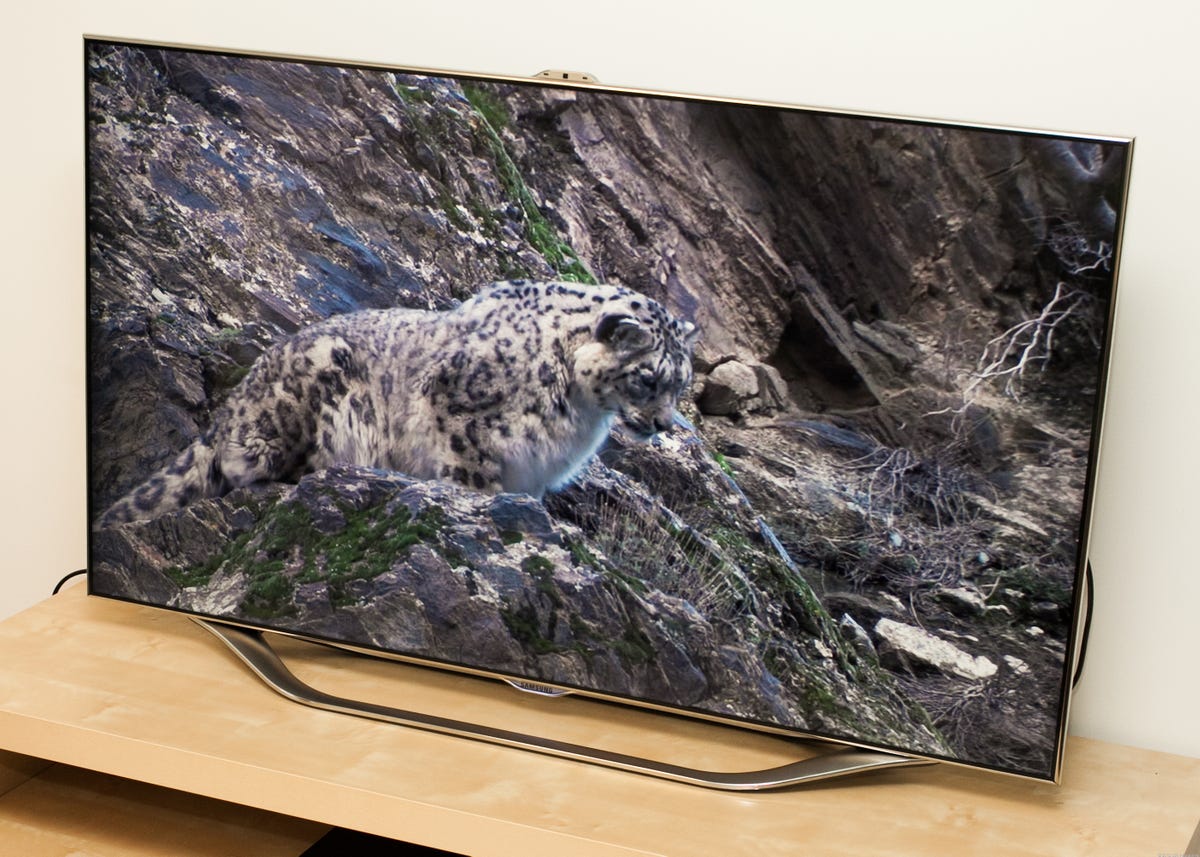Samsung UN55ES8000 (pictures)
Although it hits plenty of high points, the Samsung UNES8000 LED TV cannot ultimately justify its high price.

Overview
But maybe you're wondering about how its picture stacks up against the competition, or about how much further your TV experience will be taken by spending the extra dough. OK, fine, keep reading. The Samsung UNES8000 isn't a bad performer by any means, but it's not much better than many LCDs and plasmas, and worse than you might expect from Samsung's highest-end LED TV. It's also more expensive than just about any TV available today, with the exception of a few models with full-array local dimming. Finally its standout feature, which allows you to control the TV with a wave or a word, just don't work all that well. Few TVs can approach the Samsung UNES8000's "wow" factor, but how much that matters to you depends on your tolerance for its significant caveats.
Profile view
Stand detail
Bezel detail
Corner detail
Camera/microphone detail
On-panel control nub (back)
On-panel control menu
Touch pad remote
In practice the touch pad is frustrating to use, alternating between too twitchy and unresponsive. The clicker is denuded of most buttons, relegating the number pad to a kludgy onscreen version and eliminating the Menu key altogether. The lack of buttons also made it necessary to select from annoying onscreen mini menus for functions as basic as Pause, Menu, and Chapter Skip. For using the browser, the pad is better than gesture control, but not by much.
Standard remote
Optional keyboard
The final design of the keyboard may differ from the preproduction model shown here.
Bluetooth-to-IR-blaster
Included 3D glasses
Back panel
In the image you can also see the removeable panel hiding the company's Evolution Kit. The TV's processor and memory can be swapped out and upgraded at a later date (as early as 2013) and for an unspecified fee to allow improved functionality.
Voice control setup
Voice commands list
Gesture control setup
App store
Kids app
History
Camera app
Advanced picture settings
10-point white balance control
3D settings
Picture quality
The new ES actually delivers slightly worse black levels than its predecessor (I'll chalk that up to its new nondimming Micro Dimming scheme) but outdoes its color and screen uniformity. Despite its strengths the UNES8000 was outperformed not only by less expensive plasmas, but also by the similarly priced Sony HX850 and the much cheaper Sharp LC-LE640U LED sets.

